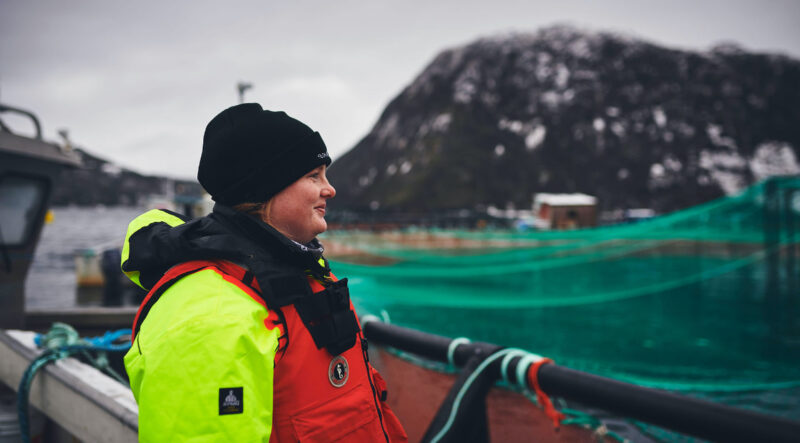Why Atlantic Canada wants aquaculture to keep growing
“One need only go to the communities to talk to the people working in the sector and the business groups to see what aquaculture is bringing to their communities”
Commentary
By Jamie Baker
A recent letter-writer asked a very important question: Why does N.L. allow aquaculture?
We are glad he asked, and happy to answer. The highly regulated and publicly reported aquaculture sector brings everything you could want from a sustainable food production sector – literally and figuratively – to the table in Newfoundland and Labrador, Atlantic Canada, and beyond.
For starters, the sector is a huge component of global and local food security. Consider that every day our hungry world eats three billion seafood meals. More than half of those meals currently come from farmed sources, and that number is climbing daily, meaning more pressure will be put on many struggling wild fisheries if we do not grow the aquaculture sector.
Here in N.L., we currently sit at 10 per cent food security, which is very concerning. Sustainable and reasonable growth of finfish and shellfish farming in the province can double that number to 20 per cent all by itself in the near future. All while creating little impact on the environment and positive impacts on the rural economy.
Let’s talk about the environment specifically. The aquaculture sector has the smallest carbon footprint of any major protein producer in the world. The Coller FAIRR Index regularly assesses, in detail, 60 of the world’s largest publicly traded global meat, dairy and aquaculture companies on 10 environmental, social and governance themes aligned with the United Nation’s Sustainable Development Goals. Go look at the list, and there sitting in the top two spaces are Mowi and Grieg – two companies that are investing here in N.L.
The impacts on our people are equally positive. After a difficult year affected by COVID in 2020, last year the sector rebounded to pre-pandemic levels, producing just under 20,000 tonnes of shellfish and finfish worth nearly a quarter billion dollars – and those dollars do not include any of the value-added work being done. The sector provides upwards of 1,000 jobs on the production and processing side, not to mention the countless other jobs in every service and supply area from technology to trucking to telecommunications to you name it.
And nearly all of these dollars and opportunities are flowing directly into rural, coastal communities.
We would call that a tremendous success story. One need only go to the communities to talk to the people working in the sector, the municipal leaders, and the business groups and organizations to see what aquaculture is bringing to their communities.
For the first time in years, these communities are welcoming new, young families, coming in to work and live and raise their families. Not just to make a living, but to make a life.
And yes, farming is challenging, whether on land or at sea, and the N.L. aquaculture sector is no different.
To help us overcome these challenges, we have some of the best and brightest people in the world working daily to bring positive advancements and innovations, and they are being supported by immense investments of money and time invested by companies and workers. The incredible mix of generational backgrounds in marine fields, combined with traditional knowledge and advancing technology on all fronts in N.L., is unlike anywhere in the world. We are seeing this collaborative approach bringing about huge benefits for people and the challenging environments in which we operate.
A good recent example is the lumpfish project, which has been so incredibly successful in mitigating sea lice that Cooke Aquaculture is taking the technology to its other operations in Atlantic Canada and the US. This past August, St. John’s played host to the three-day Aquaculture Canada and WAS (World Aquaculture Society) North America 2022 Conference and Trade Show – the largest seafood conference and trade show in Canadian history, welcoming nearly 1,300 delegates from around the world. The province welcomed the entire global aquaculture community in the science, farming, service/supply and regulatory sectors for an event that celebrated the achievements of the sector, discussed the challenges, and established a clear, sustainable, collaborative vision for the future.
The hard-working men and women in the aquaculture sector are, unfortunately, quite used to hearing the same outdated arguments from the same folks.
But farmers remain focused and committed to advancing and developing an aquaculture sector Newfoundland and Labrador can continue to build upon for generations to come.
Jamie Baker is the executive director of the Newfoundland Aquaculture Industry Association.
(Image of an aquaculture worker in NL by NAIA.)

